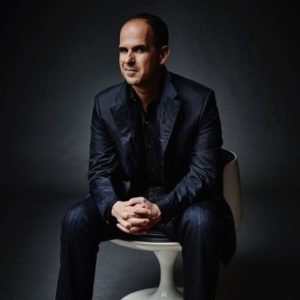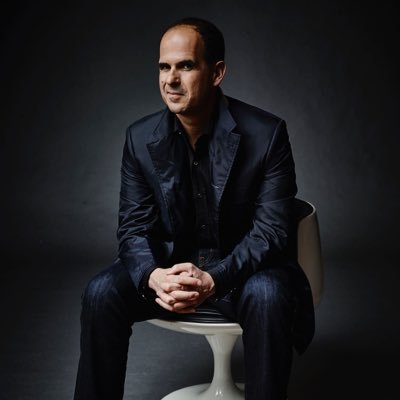
Marcus Lemonis is “The Profit”
What You Can Learn From Marcus Lemonis
I learn something every time I watch The Profit on CNBC (Tuesdays at 9pm CST). Every time. Every single time Marcus Lemonis walks through phases of life with these small business owners, I’m reminded whyI do what I do (though obviously not at the level that the profit does it…lol….yet). His love for entrepreneurs and passion for small business shows in every conversation he has, yet his handle on the numbers that make the business work is always rock solid. He is a walking, breathing iteration of his now famous slogan “People, Process, Product”, and I love it. Here’s a great video where he talks about one of his core concepts:
The DiLascia Episode from “The Profit”
This last week’s episode was no different, and illustrated a core belief that I have developed about small business owners (including myself): we don’t like to let go.
It centers around DiLascia, an LA clothing brand run by Patrick DeLascia and his brother and sister. Great family business built around a strong core premise: clever fashion.
The instinct to not “let go” can be a great thing; the burning desire to see a project through, to complete a vision, to execute on that task we’ve been avoiding, these are all wonderful manifestations of the drive that makes entrepreneurs successful in our system. And to be fair, each one of these participants on the show has had some measure of success at one point or another, and it’s usually attributable to this same drive and unwillingness to let go that we’re discussing now.
A Professional Outside your Business Sees What You Can’t
However, there are always these pivotal moments or concepts revealed in the show, which they do such a great job of portraying, that reveal what is usually the crux of the problem. This week’s episode was no different. Patrick DiLascia had started a boutique fashion line in LA, and had some initial success. One notable area of giant success was snagging big retailers like Nordstrom, and an interesting licensing agreement with TMZ, of all people. As all small businesses do, DiLascia encountered a big bump in the road when a retailer (never named) that was buying a consistent, large amount of clothing suddenly closed. When he lost that contract, things got tough, fast. Losing that amount of product sales also revealed holes in the strategy. Instead of using the cash flow from the large customer to aggressively diversify into other areas, the business was built essentially on this one core idea (clever t-shirts).
It’s germane to point out that I have limited exposure to retail clothing, but I think the point is well made in the show that this was the case, so I’m rolling with it.
Finding “The Thing” That’s Holding Your Business Back
What was significant to me, and has been throughout the life of the show, is how obvious it is when Marcus hits a hot point for the business owner. Sometimes it’s the brand, other times it’s something that one member of the business “owns”, even though they perhaps are not very good at that thing (like the candy/ice cream parlor company “Farrell’s” episode where Sandy is running the candy store, and is obviously bad at it. While it was easily demonstrable that she was not doing a good job, and that the new way was better, she would not let that go). For Patrick, it was the address. He stated that he felt creatively free in that space, and I’m sure the ego boost of having street-facing retail square footage was a factor as well, but it had to go because it was holding the business back.
Do You Know Your Numbers For Success?
One of my favorite things that Marcus does is break down the number s of what should be what in any business he is considering. Food cost should be this percentage of total cost of goods sold, and that number should never be above this certain percentage of top line revenue, etc… In this case, he discussed how this high rent was killing the business, especially in light of the loss of BIG CUSTOMER (he also emphasized, and proceeded to fix, the problem of under-diversification of offerings).
I don’t want to go further into the episode (you can watch entire episodes of Marcus Lemonis in ‘The Profit’ here at CNBC), but would rather focus for a brief time on this propensity to not let certain things go.
What Change am I Resisting in My Business?
What are you resisting? What counsel are you getting from experts that you’re just not willing to follow (on a side note, if you’re not getting input from a coach, successful mentor, etc…, you should stop reading now and go find one. You’ll never learn all you have to learn on your own. John Ghegan, then president of U.S. Business Advisors, kept a sign on his desk that said, “If I had it to do all over again, I’d get help”).
I know for me, there have been many things like this that I have resisted over time. I’ve benefited every time I gave in, and that’s what I learned in this episode of The Profit: to seek out these areas of resistance and clear them out. Like a farmer who put hours of hard work into removing a stump from a plot of ground so that he can better use that land, I should put extra work into removing these areas of resistance that are bogging down my business, and ultimately, my success.
Is this the same as “Strengthening My Weaknesses”?
I distinguish between this (clearing an obstacle) and “strengthening my weaknesses”, which I believe is wasted time. Far better to hire for your weaknesses. On this podcast with Pat Flynn of Smart Passive Income, Michael Hyatt goes through this exact journey when he was working for Thomas Nelson Publishers, and talks about the powerful difference between spending time on something you’re not good at, and very likely hate, versus hiring for that weakness to clear that off your plate. It can make a big difference for your business (btw, I linked to all those properties individually because they have all helped me. You should check them out).
Small Business Power Questions:
- What is one problem I’d fix today if I could?
- What is causing me the most pain in running my business day-to-day?
- What’s one marketing change I’d make today if I could?
- What’s stopping me from making that change?
- What assets am I putting in place to move in this direction?

